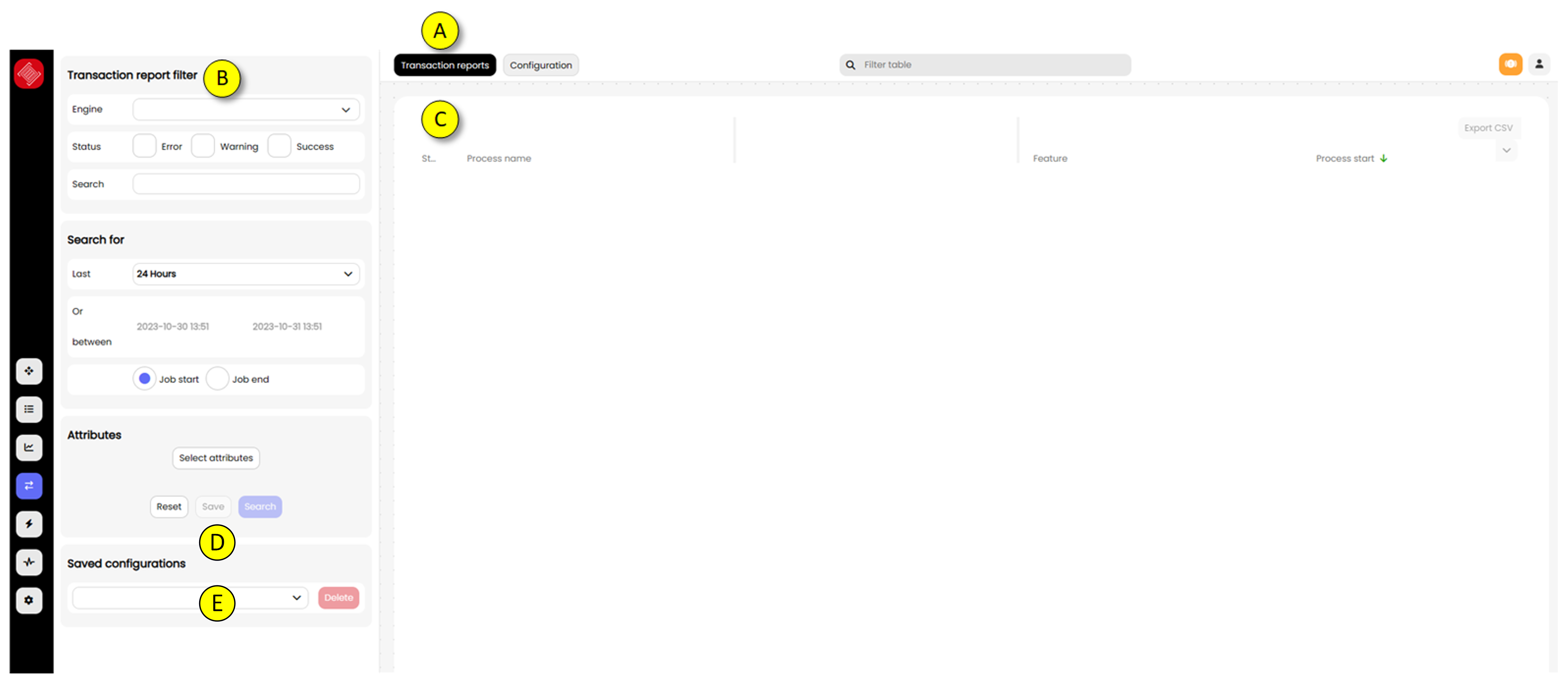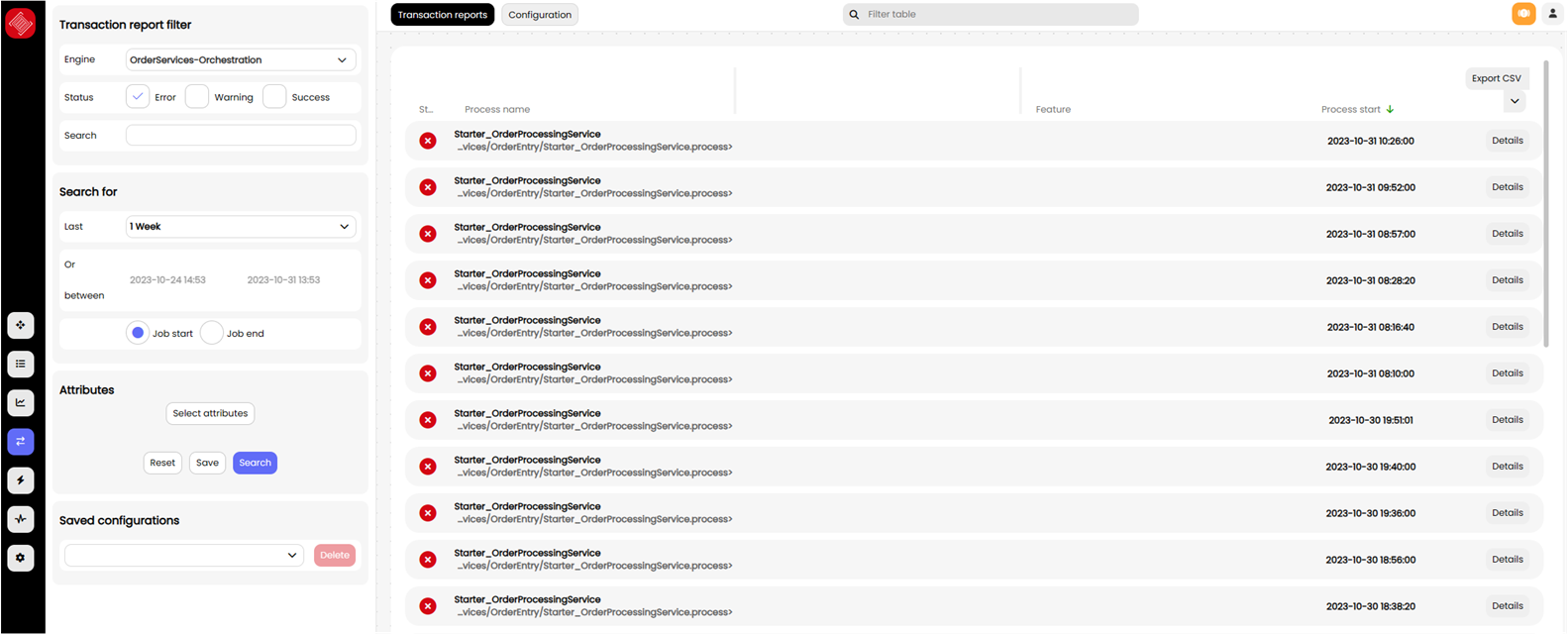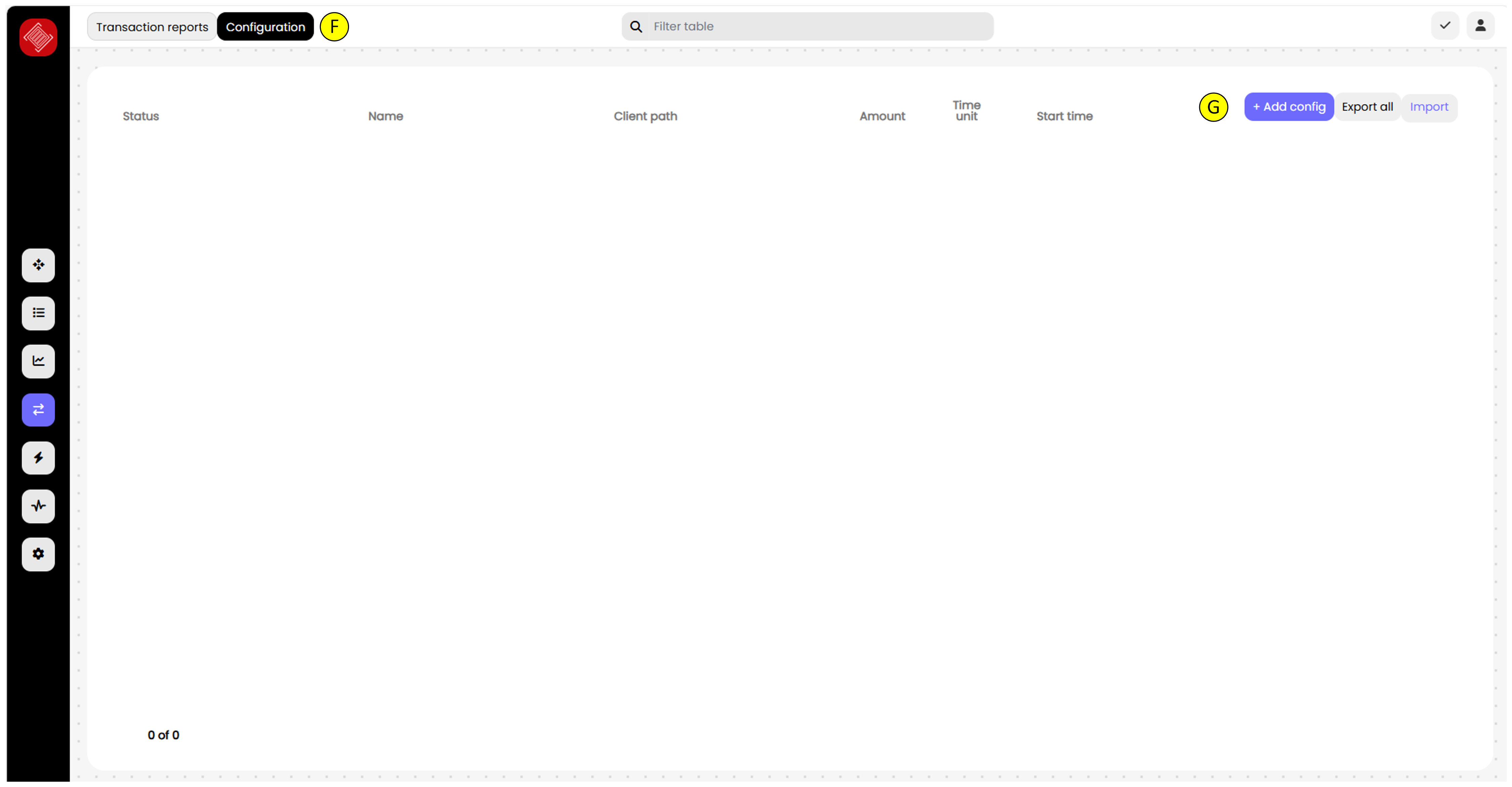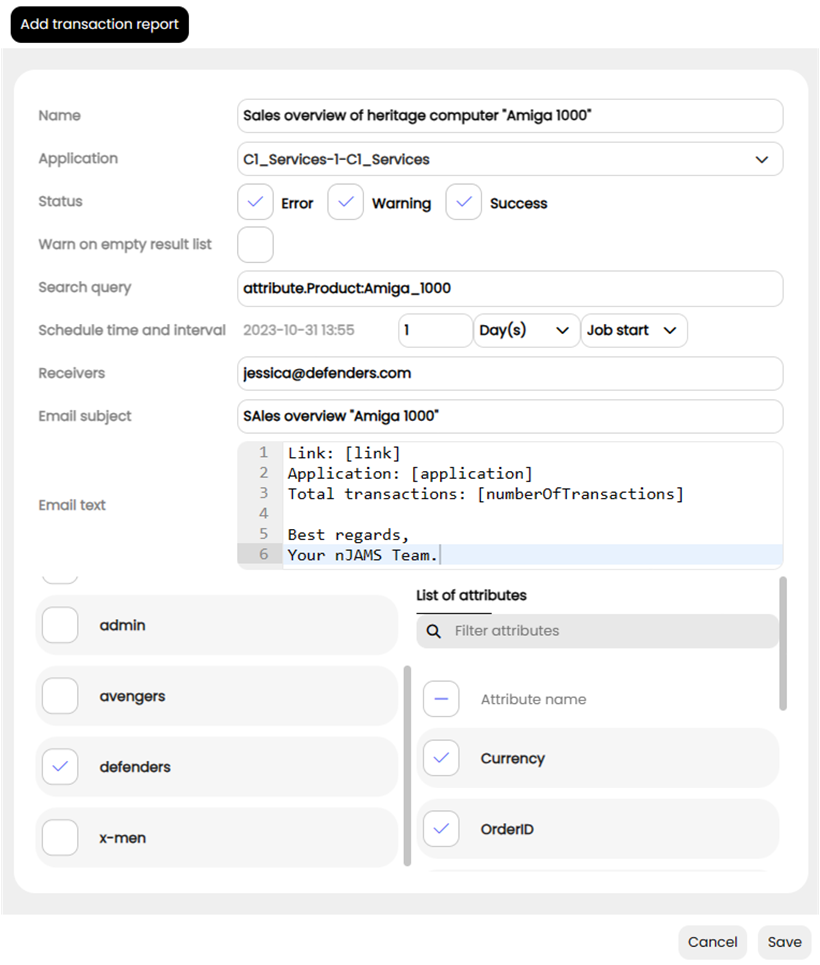Transaction Reports#
The Transaction Reports section in nJAMS allows users to effectively monitor and analyze transactions based on specific criteria. This document guides users through the process of accessing, configuring, and using Transaction Reports to generate actionable insights from process transactions.
Please note that specific object privileges are required to create transaction reports for corresponding engines.
Open the Transaction Reports from the main menu by clicking on Transactions:

(A)Transaction Error Reports are based on a particular application and a period of time.
(B)Filter criteria for the Transaction Report
Engine: select a Domain Object from type engine from the combo box
Status: specify the status of the process execution, multiple selection is possible
Search query: enter a complex query as known from the query on Main page
Show for last: pick a relative time frame
Or between time: pick an absolute time frame
With selection criteria: specify whether time frame is related to jobstart or jobend
Select attributes: select available attributes to be part of your transaction report
(C)Search results according to filter
(D)Save: provides an option to save the current filter settings for future use.
(E)Saved Configurations: allows users to load previously saved queries from a drop-down menu.
The following example represents an “Order Report”, which applies to application “Order Orchestration” and returns the errors of the last 24 hours:
The reports generated can also be exported in CSV format for further analysis or archival purposes.
The Scheduled Transactions Report allows you to generate and send reports of process transactions via email. For example, you might want to receive a report every morning detailing errors from a particular application that occurred the previous day. This Transaction Report can be configured to search for specific result sets of process transactions. You can specify one or more recipients to receive the Transaction Report by email. Please note that the system privilege ‘Server operator’ is required to create or configure these transaction reports.
To schedule a report:
(F)Click on the Configuration tab.
(G)Click on Add Config to specify the configuration details for the scheduled reports.
The following configuration schedules the report “Sales overview” every day at 12:00.
The report queries for order entries, where custom attribute Product matches a certain value, and sends an email to a list of recipients:
The email body contains placeholders for the
link to the Transaction Report within nJAMS Server
name of the application
total number of transactions
While typing press
ctrl-spaceto get a list of available placeholders:
Note
Report Frequency Recommendations: It is recommended to schedule Transaction Reports to be sent no more frequently than once per day to avoid excessive system load and to streamline the monitoring process. If more frequent updates or real-time monitoring is necessary, consider using the Rules in nJAMS for immediate alerts based on specific conditions or thresholds. This approach helps balance between timely updates and system efficiency.



